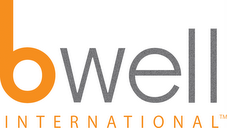by Mary Hobson, CMO, bWell-informed
Way back in 1982, Congress fell in love with the idea of allowing private insurers to offer competitive HMO products as an alternative to traditional fee-for-service Medicare options. Seen through rose colored glasses, the marketplace was the cure for all Medicare’s woes. Through the magic of competition, private insurers would provide greater choice, reduced cost, and better quality service.
The legislative body was still in love with the idea in 1997, when it expanded the products private insurers could offer to Medicare eligible to include preferred provider organizations (PPOs), provider-sponsored organizations (PSOs), and private fee-for-service (PFFS) plans. And the love-fest showed no signs of abating even as late as 2004, when the Medicare Modernization act passed, raising payment rates to private providers.
Today, however, with an incoming Democratic regime, the Hill’s long-term romance with “free market” Medicare could be at an end. Helping the “breakup” along? A recent report issued by the respected health policy journal Health Affairs which indicates that taxpayers are actually paying more to subsidize private Medicare plans. Says Marsha Gold, senior fellow at Mathematica Policy Research who authored the report:
“Clearly, the Medicare Modernization Act (MMA) has expanded choice and the private-sector role. But it also has added to Medicare's complexity and costs and has created potential inequities, without apparent improvements in quality.”
While legislators’ ardor is likely to cool substantially, Medicare customers are still flocking to the plans in droves. Today, one in three Medicare beneficiaries with Part D now gets their coverage from private third party providers. Almost a quarter of all Medicare beneficiaries, more than 10 million people, are enrolled in private plans.
Ironically enough, the extra funding these plans receive--according to the report, they are paid 12 percent more on average--is one of the biggest reasons for their popularity. The added value averages more than $1,100 a year per patient, and some of that money goes to provide extra benefits like reduced cost-sharing or reduced premiums for add-on benefits like vision and dental care. A large percentage, however, goes to insurance company profits.
And while some Medicare recipients enjoy a few additional benefits, the overpayments have resulted in an overall rise in Medicare’s costs—with taxpayers and traditional Medicare plan beneficiaries picking up the tab.
2009 looks to be a year in which Congress takes a stand, with support from the White House. On the campaign trail, President-elect Barack Obama called for eliminating the excessive subsidies and paying private plans only what it would cost to treat the same patients under traditional Medicare. Whatever happens, it’s clear that additional monitoring, oversight, and accountability will mean the honeymoon is over for private Medicare insurers.
To download the PDF version of Marsha Gold's report, "Medicare's Private Plans: A Report Card On Medicare Advantage", click here.
skip to main |
skip to sidebar

Health insurance is way too confusing. We are not used to buying it confidently, whether in the employer setting or on our own without an employers sponsor. Now is the time to be well informed about what is going on in health insurance and care reform, so you can obtain high quality and lower costs.

Enter into a dialogue with thought-leaders in health coverage issues, including but not limited to Health Savings Accounts and Consumer Directed Health Care! This blog covers this rapidly changing marketplace with news and commentary from bWell's executive team.
bWell International, Inc. is a health benefits education company that believes health is wealth, and was founded to help consumers gain more confidence about their health coverage and lifestyle decisions.
Learn more about the company at www.bwell-inc.com or take a spin through our flagship product, the bWell-informed Health Plan Forecaster: www.bwell-informed.com
bWell International, Inc. is a health benefits education company that believes health is wealth, and was founded to help consumers gain more confidence about their health coverage and lifestyle decisions.
Learn more about the company at www.bwell-inc.com or take a spin through our flagship product, the bWell-informed Health Plan Forecaster: www.bwell-informed.com